- Author Jason Gerald [email protected].
- Public 2023-12-16 10:50.
- Last modified 2025-01-23 12:04.
Orange is a combination of red and yellow, but by using different portions of red or yellow, you can create different shades of orange. After learning basic color theory, you can apply the principles to a variety of media, including paint, frosting, and polymer clay.
Step
Method 1 of 3: Making Orange Paint
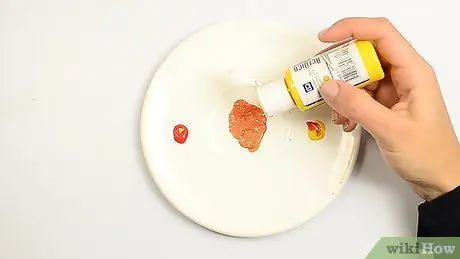
Step 1. Mix red and yellow
Orange is a secondary color, meaning it can be created by combining two colors. The two primary colors needed to make orange are red and yellow.
- "Primary" colors are created naturally and cannot be created by mixing other colors. There are three primary colors: red, yellow, and blue. To make orange, you only need red and yellow.
- "Secondary" colors are created by mixing two primary colors. Orange is a secondary color because it can be made by mixing red and yellow. The other two secondary colors are green and purple.
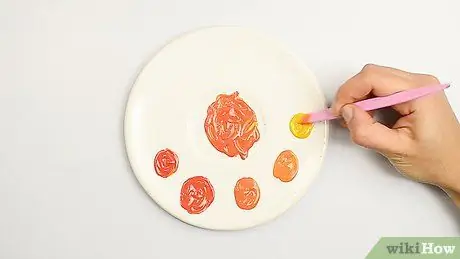
Step 2. Get various shades of orange by adjusting the proportions of the primary colors
Pure orange can be obtained by mixing pure yellow and red in a balanced ratio (50:50). However, if you want a slightly different shade of orange, try increasing the amount of red or yellow to match the color.
-
Yellow-orange and red-orange are two of the simplest variations of the shade. This color is also known as a "tertiary" color. Tertiary colors are exactly between the primary and secondary colors on the color wheel.
- The yellow-orange color is made up of 2/3 yellow and 1/3 red, or orange and yellow.
- The red-orange color is made up of 2/3 red and 1/3 yellow, or orange and red.
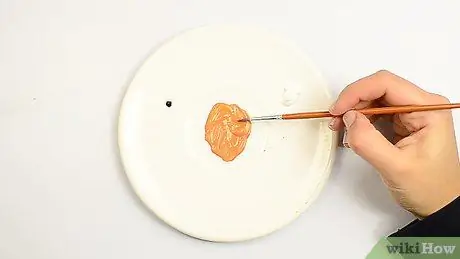
Step 3. Add black or white to change the intensity of the orange color
You can make a dark or light orange color by adding black or white.
- The amount of white or black you mix depends on how dark or light you want the orange to be.
- Bright color values are usually referred to as "tint," while dark color values are usually referred to as "shades."
Method 2 of 3: Making Orange Polymer Clay

Step 1. Prepare clay with several colors
Provide a minimum of two red clay, two yellow clay, one white clay, one clear clay, and one black clay.
- You should also prepare one warm red (slightly orange) clay and one cool red (slightly purplish) clay.
- Also prepare one warm yellow (slightly orange) clay and one cool yellow (slightly greenish) clay.
- Remember, you can also use more than one shade of red and yellow to create an orange color. However, you only need yellow and red to research the principle of color mixing and understand how it works.
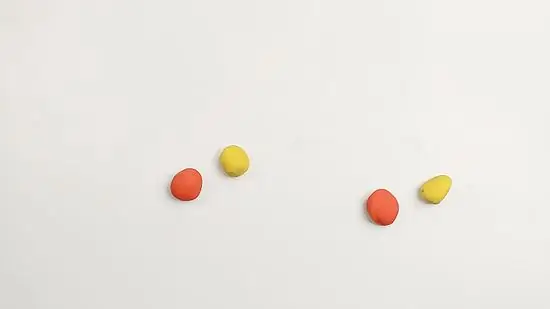
Step 2. Mix one red clay with yellow clay
Take a pinch of warm red and warm yellow clay in a balanced ratio. Glue the two pinches of clay together and knead with your fingers until they are evenly mixed.
- You will get solid orange clay with no streaks of color.
- Mixing red and yellow should produce a bright orange color, corresponding to its portion on the color wheel.
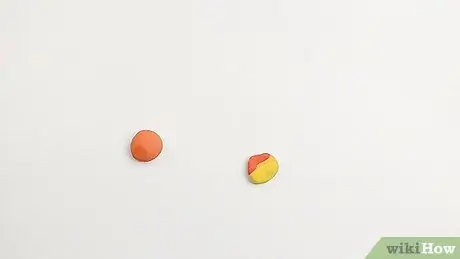
Step 3. Try another combination of red and yellow
Make three more samples by combining the red and yellow clay in equal ratios. To do this, repeat the above procedure (the procedure for making the first sample of orange clay).
- A combination of warm reds and cool yellows will produce a medium apricot color.
- A combination of cool reds and warm yellows makes for a medium melon.
- The combination of cool red and cool yellow will produce a dull orange color that is slightly brownish.
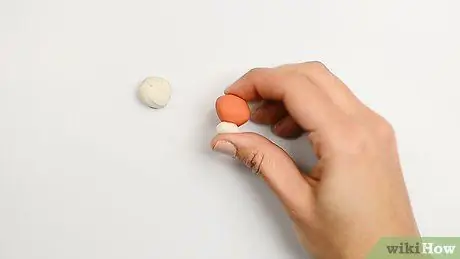
Step 4. Brighten the orange color
Choose your favorite orange color and recreate it two more times. Orange can be brightened in two ways, and these two new samples will make it easier for you to compare the results.
- Combine a pinch of white clay with one orange clay, and knead until there are no streaks of color. The orange color will become lighter and slightly darker.
-
Combine a pinch of clear clay with the other orange sample, and knead until evenly mixed. The orange color will appear slightly darker, but the value and brightness will not change.
Note that if you add too much clear clay, the orange will become semi-transparent instead of opaque orange
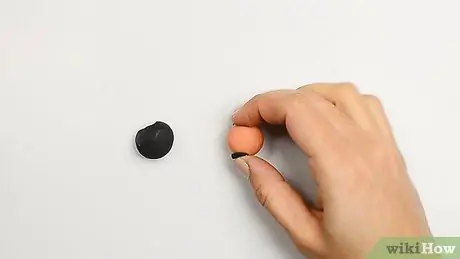
Step 5. Make the orange color darker
Make another sample of your favorite orange color. Dip a little black clay and mix in the new sample until the color is even.
- The resulting orange will have the same shade, but the black will make it darker. As a result, the orange color will look like brown.
- Black clay will change the color of other clays dramatically, including orange. Therefore, you will have to work on it a little at a time so that the shade doesn't change too much.
Method 3 of 3: Making the Orange Frosting
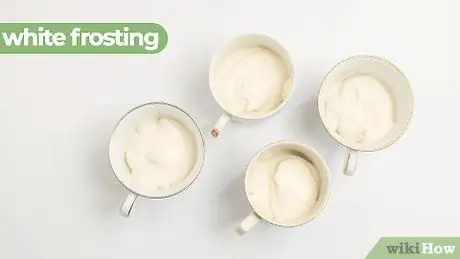
Step 1. Prepare some samples
Prepare at least four plates or small bowls. Add cup (60 ml) of ready-to-use white frosting to each plate/bowl.
- There are several ways to make orange frosting, but all use a white base frosting. You'll need a minimum of four samples of white frosting, but prepare 6-12 so you can experiment more freely.
- You will need to prepare a minimum of four food coloring: one orange, one red, one yellow, and one black. You can also prepare other shaded reds and yellows for additional experimentation.
- Ideally, use a paste, powder, or gel that's designed to make the frosting. Try not to use liquid food coloring as it tends to affect the consistency of the frosting.
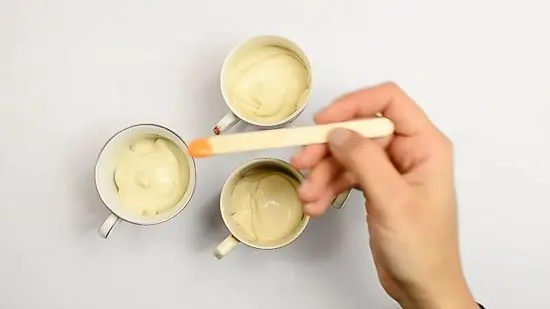
Step 2. Mix orange food coloring with one sample of white frosting
Dip a clean toothpick into a bottle of orange food coloring. Then, pass the dye-soaked tip onto one of the white frosting samples. Stir with a toothpick until the frosting is evenly distributed and without streaks of color.
- Since there is a white frosting mixed in, the end result will not be as dark as food coloring. The shade you get will always be brighter, no matter how much food coloring you use.
- However, be aware that if you mix only a small amount, the food coloring will produce a bright orange color. Conversely, if a lot of dye is used, the resulting orange color will be stronger and brighter.

Step 3. Mix red and yellow food coloring in another sample of white frosting
Use a different toothpick for each dye. Once dipped in the bottle of dye, apply toothpicks to the white frosting sample and stir until evenly distributed so that no streaks of color are visible.
This mixture will produce an orange frosting. The color of this second sample may not be exactly the same as that of the first because mixing red and yellow dyes will produce different shades of orange
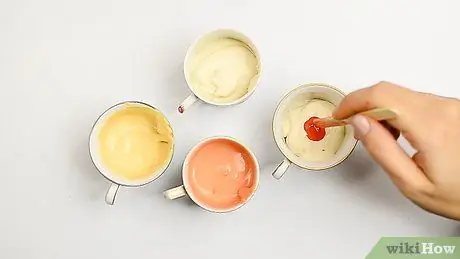
Step 4. Create a darker orange shadow
Make one more sample using orange dye, or a combination of red and yellow. After that, mix it with a small dot of black food coloring.
Black food coloring will darken the orange without changing the shade. However, it's a good idea to use a little black at a time, as a little black can have a big impact on the color of the frosting
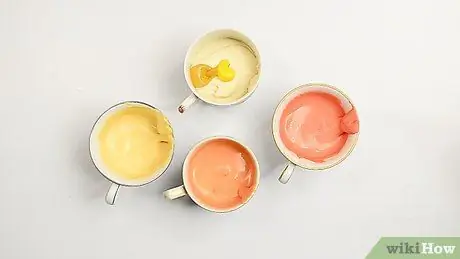
Step 5. Try any other combination you want
If you've prepared a few extra white frosting samples, use them to try different combinations or food coloring. Remember, you can later recreate the color and shade of orange you want.
- Most food coloring manufacturers provide guidelines that you can follow. However, you can also do your own experiments.
-
Here are some combinations to try:
- Mix 9/19 red with 10/19 yellow for a rosy peach color.
- Mix 2/3 orange with 1/3 golden yellow to make an apricot color.
- Mix 8/11 orange, 2/11 red, and 1/11 brown for a rusty orange.






